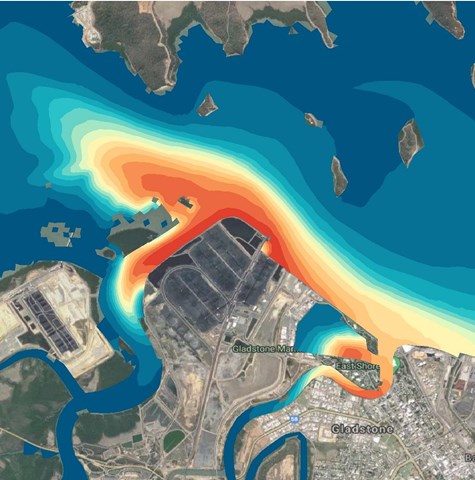For general information and enquiries, please contact info@tuflow.com
For sales or licensing, please contact sales@tuflow.com
For setting up and applying TUFLOW, please contact support@tuflow.com
For training enquiries, please contact training@tuflow.com
TUFLOW's hydraulic modelling engines have a full complement of additional optional modules to increase assessment and computing power. The add-on modules can be selected in a manner tailored to individual project needs, assisting you to complete your flood, coastal or water quality simulation tasks efficiently.
Modules - listed to the right of screen - must be added to a parent solver / engine licence as an outright purchase(s) or monthly rental.

The future of flood, estuarine, coastal and environmental simulations is computing on Graphics Processing Units. TUFLOW is already delivering this future through its HPC and flexible mesh GPU options. With the flick of a switch, modelling projects can be accelerated by up to a factor of 10 to 400 times using the GPU / quadtree acceleration module with TUFLOW's Fixed Grid Solver (TUFLOW HPC). Up to a 40 times speedup is common for TUFLOW's Flexible Mesh Solver (TUFLOW FV) simulations. TUFLOW FV is currently limited to upgrades that include a single GPU card device. TUFLOW HPC can run a single simulation using multiple GPU cards, providing multiplicative acceleration.
CPU compute is a thing of the past - with TUFLOW, CPUs can be left behind and previously intractable modelling projects can be launched with ease into the exciting future of fast simulation. Combined with cloud compute options, TUFLOW's GPU capability provides everything needed to support complex environmental modelling projects.
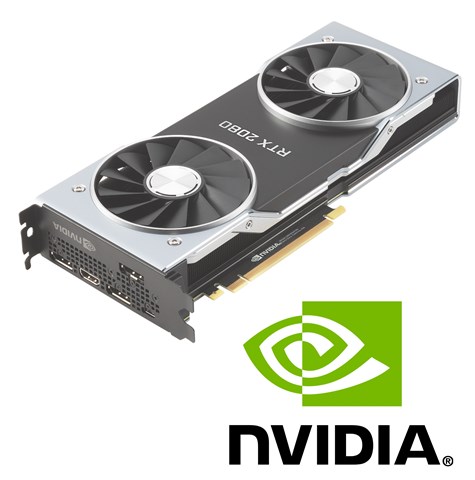
TUFLOW's fixed grid solvers (HPC and Classic) support variable cell sizes using the quadtree and multiple 2D domain module. These modules are not needed by the TUFLOW Flexible Mesh solver (TUFLOW FV) as their capabilities are inbuilt to that solver by default.
Quadtree is the latest addition to the TUFLOW add-on module list. It is compatible with the HPC solver and typically (but not exclusively) used in combination with the GPU module. A quadtree mesh is constructed by equally subdividing each of any number of user-selected standard cells into four smaller square cells. These smaller cells are then able to be further subdivided into four, and so on. This allows modellers to use larger cells in areas of flat terrain (eg. large flat floodplains) and smaller cells where either terrain varies rapidly or along known primary flow paths (eg. river channels, road gutters, open channels).
The quadtree module takes minutes to implement within a standard fixed grid model. It offers refinement benefits of a flexible mesh approach, but with the model build efficiency of a traditional fixed grid solution.
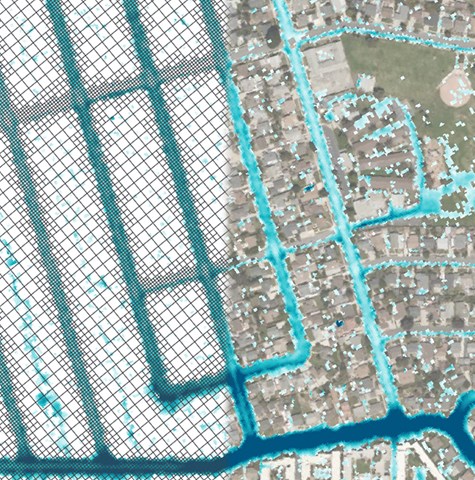
A TUFLOW CATCH module licence enables both the pollutant generation features in TUFLOW HPC, and the TUFLOW HPC to TUFLOW FV automated boundary condition information transfer functionally. It also provides an option for coordinated execution of linked TUFLOW HPC and TUFLOW FV models.
This new module add-on facilitates seamless simulation of whole-of-catchment hydrologic, hydraulic, pollutant export and receiving waterway processes. It supports 1D, 2D and 3D simulation of these processes from the very top of catchment to the receiving waterway outlet via accurate numerical simulation of the key physics that drive catchment / receiving water processes.

TUFLOW FV's Advection Dispersion (AD) Module allows modellers to explore the fate and transport of dissolved quantities, salt, temperature and all water quality constituents.
The AD Module is at the heart of TUFLOW FV's 3D modelling capability because it determines the movement of quantities that relate to density, and hence vertical (density driven) stratification. Without the higher order AD scheme implemented by TUFLOW FV, resolving and maintaining these gradients (which are often sharp) is difficult: TUFLOW FV does this with ease.
When used in conjunction with TUFLOW FV's Water Quality Module, the AD Module supports advanced water quality simulation. This allows users to examine the fate and transport of a host of environmental quantities including (for example) oxygen, nutrients,organic matter and phytoplankton..
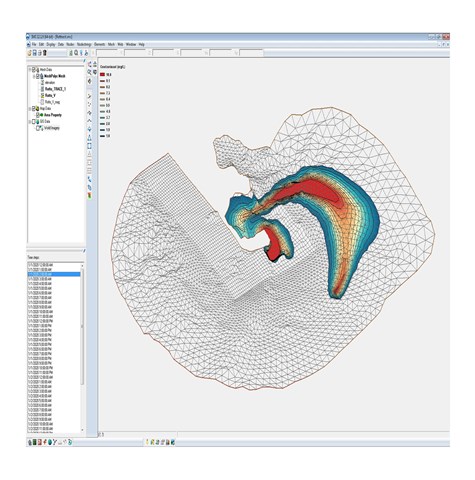
The TUFLOW FV Water Quality (WQ) Module supports dynamic simulation of a range of commonly measured water quality constituents, including dissolved oxygen, silicate, inorganic and organic nutrients, and phytoplankton. The module includes simulation of environmental processes such as sediment flux, atmospheric exchange, nutrient transformation and phytoplankton growth and mortality. To do so, the TUFLOW FV WQ Module draws on the world class science of the Aquatic EcoDynamics research group at the University of Western Australia, but via the familiar TUFLOW style command styles and workflows. The module is fully supported by the TUFLOW team, and comes with its own interactive online manual and freely downloadable mass conservation model.
The TUFLOW FV WQ Module requires the TUFLOW FV AD module, and can be run in 2D or 3D mode.
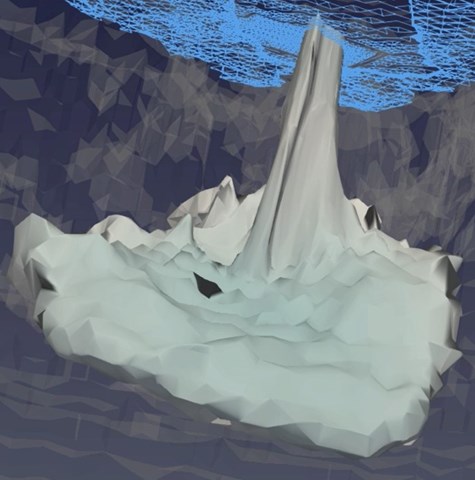
Simulation of water movement across all three spatial dimensions is well established as the norm for most environmental modelling applications. This is because environmental flows that are deeper than a few metres will typically exhibit vertical variations in velocity, density and/or water quality.
The TUFLOW FV 3D Module allows users to capture this vertical variation and accurately simulate in three spatial dimensions. This can be implemented equally well with or without density coupling. For example, the 3D Module can be used to capture vertical velocity gradients in unstratified high energy environments where density is unimportant. Equally, when coupled with other Modules (AD, ST or WQ) the 3D Module can simulate the detailed dynamics of environment parameters such as temperature, salinity or sediment (and all combinations thereof) if required.
TUFLOW FV's 3D module has been applied successfully in myriad applications and is a valuable support to environmental modelling applications.
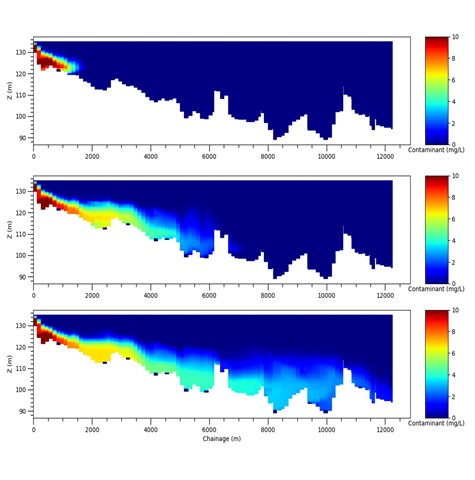
The TUFLOW FV Particle Tracking (PT) Module deploys a Lagrangian model that solves the 2D/3D transport equations of discrete particles. This scheme allows particles to be tracked semi-independently of the model mesh. Key features include:
This Module has been used to simulate the fate and transport of snapper larvae, turtle hatchlings and more.
The PT Module can optionally be paired with the GPU and/or 3D Modules.
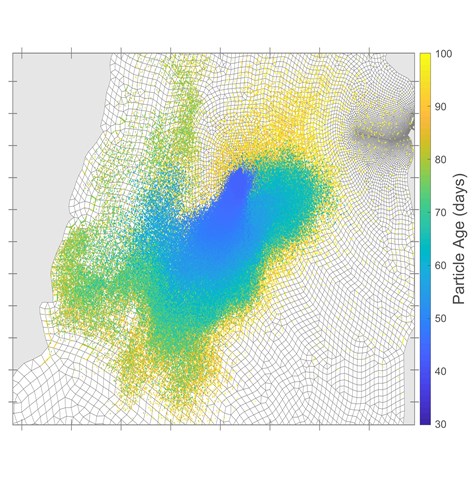
The TUFLOW FV Sediment Transport (ST) Module supports environmental simulation of multiple sediment fractions of differing properties. Sediment fraction groups can be assigned as cohesive or non-cohesive with the flexibility of selecting a range of interchangeable sediment transport models, equations and parameterisations. Core ST functionality includes simulation of:
The ST Module requires the Advection Dispersion (AD) Module to function. It can optionally be linked with the GPU, 3D and/or WQ Modules.
